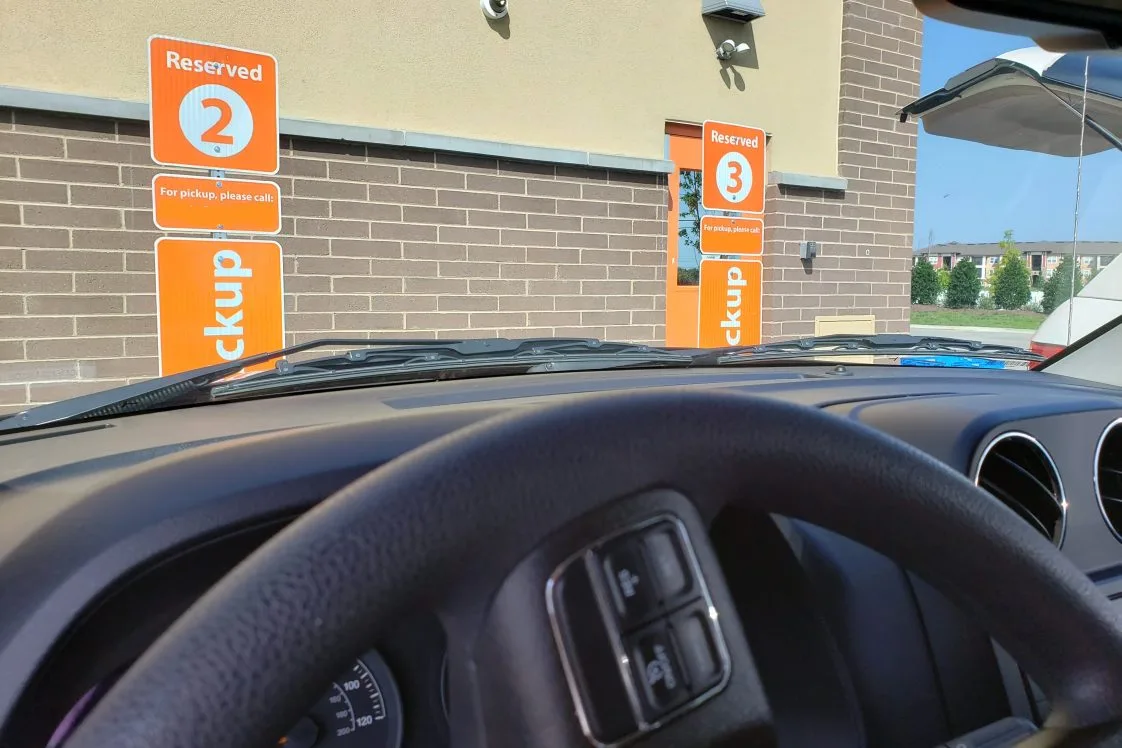Best Practices for Implementing Curbside Pick-up

Safety and convenience have always been important aspects of the shopping experience. But lately, these factors have played a bigger role in the way customers shop. Now, instead of visiting brick-and-mortar locations to browse store shelves and make purchases in-person, many customers choose to buy online and pick up their orders from the curb.
This means, if retailers hope to retain their customer base, they need to incorporate curbside services into their customer experience strategies.
Here we’ve put together a list of 5 tips to help you design a curbside experience that’s positive for your customers, now and in the future.
Provide Detailed Customer Instructions
Customers aren’t privy to all the information you and your associates have. They don’t inherently know when their orders are ready. New customers don’t know where to go to pick up their purchase, and people who are new to buy online, pick-up at curbside (BOPAC) altogether don’t know what to bring or do once they arrive.
Here, you can help by walking customers through your process. This includes everything from what time you want them to arrive and where you want them to park to guidelines for making the hand-off as safe as possible. Ultimately, sharing this information not only makes the process run more smoothly, but it keeps your customers happier.
Personalize the Experience
Just because customers are shopping “from a distance,” doesn’t mean they want zero human interaction. They’re still looking for your business to provide a positive customer experience. Fortunately, you can meet this demand in a few different ways.
First, you can provide excellent customer service, by encouraging your associates to speak in a cheerful tone, answer inquiries and FAQs, and respect health and safety guidelines when interacting with customers.
You can also enhance the environment, by bringing in-store elements to customers in your parking lot. For example, you can play in-store music over loudspeakers to create a nicer atmosphere for customers while they wait. And to guide customers to your pickup location, you can add branded signs around your parking lot with arrows and instructions.
Even small touches like labeling parking spaces in creative (but clear) ways and using on-brand packaging can make the pickup experience a little more enjoyable.
Create a Clear Fulfillment Process
Perhaps the most important aspect of BOPAC is fulfillment. However, it can be complicated when you have to plan the movement of merchandise from your wholesaler to the trunk of your customers’ cars.
That doesn’t mean curbside fulfillment can’t be as streamlined as online orders and in-store sales, though. By creating a clear process for pulling inventory, packing purchases, and handing-off packages to customers, you can make your fulfillment process run smoothly.
Tighten Up Inventory Management
Inventory management matters, no matter how your shoppers are buying merchandise. But when they can’t see your inventory in-person, it’s even more important. The reason being, you can’t afford to have customers purchase a product that’s out of stock or in the hands of another shopper. It leads to slow order fulfillment and an overall poor customer experience.
Luckily, improving your inventory management to the point where it can effectively handle large amounts of BOPAC transactions just requires a quality order management system (OMS) solution.
With it, associates can see inventory both in your location and across the organization. And, if need be, they can get products shipped to your store from the most convenient and cost-effective location to fulfill customer orders, as quickly as possible.
Simplify Returns
While the process for BOPAC is pretty straightforward for customers and associates alike, handling returns can be much more challenging. Not only does it require more interaction, but the process is typically more complicated, involving receipt scanning, refunds, and reverse fulfillment logistics.
As a result, businesses that simplify this process can drastically improve their brand perception and increase customer loyalty.
And here again, an OMS solution makes this possible. It can process any and all returns at POS systems, regardless of what channel the products were purchased on, and it can provide customers with pre-paid shipping labels and return instructions if they’d prefer to send the merchandise back, themselves. Once received and logged into the system, an OMS can add the product back into your company-wide inventory or damage it out and arrange transport to wherever it needs to go.
The benefits of BOPAC to your customers, your employees, and your bottom line are immense. And fortunately, whether you have to pivot or simply refine your operations, incorporating BOPAC into your customer experience strategy is pretty straightforward. All it takes is some thoughtful planning and intentional action.
